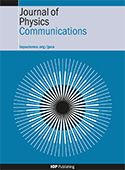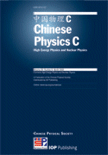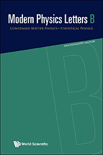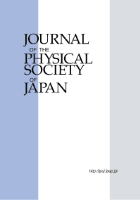
Nature Reviews Physics
metrics 2024
Illuminating the Path of Scientific Discovery.
Introduction
Nature Reviews Physics is a leading academic journal published by NATURE PORTFOLIO, specializing in the realm of physics and astronomy. With a significant impact factor that places it among the top-tier journals in its field, it has achieved a remarkable ranking of 3rd out of 243 according to Scopus, reflecting its influential position and 98th percentile standing in general physics and astronomy. This prestigious journal, with an expected convergence spanning from 2019 to 2024, provides comprehensive reviews that capture the latest advancements and critical developments in physics, deemed essential for researchers, professionals, and students alike. While the journal does not currently adopt an open-access model, its scholarly contributions and insights into cutting-edge research make it a vital resource for those seeking to advance their understanding of the complexities of the physical universe.
Metrics 2024
 -
- 44.80
44.80 44.60
44.60 -
-Metrics History
Rank 2024
IF (Web Of Science)
JCI (Web Of Science)
Quartile History
Similar Journals

Revista Cubana de Fisica
Fostering Collaboration Among Latin America's Brightest MindsRevista Cubana de Fisica is a prominent open-access journal based in Cuba, published by EDICIONES CUBANAS. With its ISSN 0253-9268 and E-ISSN 2224-7939, this journal has been dedicated to advancing the field of Physics and Astronomy since its transition to open access in 2005, making high-quality research readily available to a global audience. Despite its current Scopus rank of #229 out of 243 in the genre, placing it in the 5th percentile, the journal remains a vital platform for disseminating innovative studies and findings, particularly within the broader scientific community in Latin America. Covering a diverse range of topics in physics, the magazine aspires to foster collaboration among researchers, students, and professionals alike, thus bridging the gap between theoretical exploration and practical application. The journal operates under the ambitious objective of contributing to the advancement of scientific knowledge from 2011 to 2024 and beyond, reinforcing its commitment to addressing contemporary challenges in physics and fostering a vibrant academic culture.

Romanian Journal of Physics
Advancing the frontiers of physics and astronomy.Welcome to the Romanian Journal of Physics, a distinguished platform dedicated to advancing the field of physics and astronomy since its inception. Published by EDITURA ACAD ROMANE, this journal plays a pivotal role in disseminating high-quality research from Romania and around the globe, with an impressive impact factor that reflects its rigorous academic standards. With a focus on a broad range of topics in general physics and astronomy, it proudly maintains a Q2 ranking in its category for 2023, positioning itself among the top journals in the field. The journal, which has been converging valuable research contributions from 2008 until 2024, is accessible to a wide audience of researchers, professionals, and students interested in the latest developments and discoveries in physics. While it operates under a traditional publication model without Open Access, its commitment to quality research ensures that the contributions featured in its pages resonate well within the scientific community. We invite you to explore the rich findings published in the Romanian Journal of Physics and to engage with the vital discussions shaping the future of physics.

Journal of Physics Communications
Where Physics Meets Open Access ExcellenceJournal of Physics Communications, published by IOP Publishing Ltd, serves as a significant platform for the dissemination of innovative research in the realm of physics and astronomy. Since its inception in 2017, this Open Access journal has fostered a collaborative environment, allowing researchers, professionals, and students to share their findings and ideas without barriers. With an ISSN of 2399-6528, the journal has established its credibility in the academic community, achieving a ranking of Q3 in the 2023 category of Physics and Astronomy (miscellaneous), as well as a respectable position in Scopus with a rank of #122 out of 243 in its field. The journal's focus is on bridging theoretical concepts and practical applications, making it an essential resource for those engaged in the evolving landscape of physics. The Journal of Physics Communications not only aims to advance knowledge but also to inspire interdisciplinary collaboration, inviting contributions from diverse areas within physics. Authors and readers alike will find this journal particularly beneficial to stay updated on emerging trends and innovative research.

European Physical Journal-Special Topics
Connecting Innovators in Physics and Materials ScienceThe European Physical Journal-Special Topics (EPJ ST), published by Springer Heidelberg, is an esteemed academic journal dedicated to the dissemination of high-quality research across various domains of physics and materials science. With an ISSN of 1951-6355 and E-ISSN 1951-6401, it serves as a platform for articles that delve into topical issues and emerging areas of interest. The journal consistently ranks in the upper quartiles of its categories, achieving Q2 in Materials Science, Q3 in Physical and Theoretical Chemistry, and Q2 in Physics and Astronomy for 2023. This underscores its significant impact in these fields, positioned well within percentile rankings that reflect its relevance and esteem among peers. With an impressive convergence from 2007 to 2024, EPJ ST not only contributes to theoretical advancements but also promotes collaborative research through its open-access options. Ultimately, it serves as an essential resource for researchers, professionals, and students pursuing innovative insights and advancements in physics and materials science.

Chinese Physics C
Showcasing Breakthroughs in High Energy PhysicsChinese Physics C is a premier, peer-reviewed journal published by IOP Publishing Ltd, dedicated to advancing knowledge in the fields of Astronomy and Astrophysics, Instrumentation, and Nuclear and High Energy Physics. With an impressive impact factor reflecting its standing in the Q1 quartile across multiple categories, this journal serves as a vital resource for researchers, professionals, and students seeking to engage with cutting-edge developments and experimental findings. Since its inception in 2008, Chinese Physics C has fostered significant collaborations and discussions within the global physics community, enabling easy access to high-quality research through its open access options. Operating from the United Kingdom with a commitment to excellence, this journal not only showcases high-impact papers but also encourages innovative methodologies and interdisciplinary approaches, solidifying its role as an essential platform for dissemination and dialogue in the rapidly evolving landscape of physics.

MODERN PHYSICS LETTERS B
Connecting scholars through groundbreaking physics discoveries.MODERN PHYSICS LETTERS B, published by World Scientific Publishing Co Pte Ltd, is a pivotal journal in the fields of Condensed Matter Physics and Statistical and Nonlinear Physics. With an ISSN of 0217-9849 and an E-ISSN of 1793-6640, this journal has been a prominent platform for innovative physics research since its inception in 1996, catering to a global audience of researchers, professionals, and students alike. Its impact is reflected in its Scopus rankings, with a commendable position in the 65th percentile for Statistical and Nonlinear Physics and the 54th percentile for Condensed Matter Physics. Despite its classification in the Q3 quartile, MODERN PHYSICS LETTERS B is dedicated to advancing knowledge through rapid dissemination of high-quality research, thus playing a critical role in shaping future developments in its disciplines. Published in Singapore, the journal encourages contributions that address contemporary challenges and breakthroughs in physics, fostering an engaged scholarly community.

Lithuanian Journal of Physics
Bridging Gaps in Physical Science UnderstandingWelcome to the Lithuanian Journal of Physics, an esteemed publication helmed by the Lithuanian Physical Society, dedicated to advancing the field of physics and astronomy. Established in 2008 and continually publishing insightful research through 2024, this journal aims to provide a platform for high-quality scholarly articles that contribute to the understanding of various physical phenomena. With a steady presence in the academic landscape, the journal is currently ranked in the fourth quartile of the Physics and Astronomy category and is positioned at the 18th percentile in its Scopus ranking, reflecting its niche focus and accessibility for researchers and students alike. Although currently not operating under an open access model, the journal remains a vital resource for professionals seeking to stay informed on the latest developments in the field. The Lithuanian Journal of Physics invites contributions that inspire collaboration and innovation in physical sciences, making it an invaluable resource for the global scientific community seeking to expand knowledge within this dynamic field.

Frontiers of Physics
Connecting Ideas, Inspiring Physics ExcellenceFrontiers of Physics, published by Higher Education Press, is a premier open-access journal dedicated to fostering innovative research and excellence within the field of physics. With an ISSN of 2095-0462 and an E-ISSN of 2095-0470, this rapidly growing journal has established itself as a valuable platform for disseminating cutting-edge findings, covering a diverse range of topics from theoretical frameworks to experimental advancements. Notably, Frontiers of Physics has achieved an impressive Q1 ranking in the 2023 Scopus Quartiles for Physics and Astronomy, securing a competitive 5th out of 81 positions in its category, reflecting a high impact factor that underscores its importance to the scientific community. Since its inception in 2011 and continuing through 2024, the journal aims to bridge the gap between academia and industry, encouraging collaboration among researchers, professionals, and students alike. Its commitment to open access ensures that high-quality research is readily accessible, thereby promoting knowledge sharing and advancement in the global physics community. Explore the potential of your research in Frontiers of Physics, where the future of physics flourishes.

JOURNAL OF THE PHYSICAL SOCIETY OF JAPAN
Pioneering Innovative Research in Physical SciencesThe JOURNAL OF THE PHYSICAL SOCIETY OF JAPAN, published by the Physical Society of Japan, has been at the forefront of advancing knowledge in the field of Physics and Astronomy since its inception in 1946. With a commendable reputation reflected in its Q2 ranking within its category for 2023, this journal serves as a vital platform for disseminating high-quality research and innovative concepts. Researchers and professionals alike can engage with cutting-edge studies and reviews that span a diverse range of topics pivotal to the physical sciences. Although the journal does not currently operate with an open access model, it maintains a robust impact on the global physics community, evidenced by its placement in the 59th percentile among a competitive pool of 243 journals. With an unwavering commitment to bridging theory and application, the JOURNAL OF THE PHYSICAL SOCIETY OF JAPAN continues to inspire and cultivate scholarly discourse and collaboration across disciplines.

PHYSICAL REVIEW LETTERS
Exploring the Depths of Physical Science ExcellencePhysical Review Letters, published by the American Physical Society, is a premier journal in the field of Physics and Astronomy renowned for its rapid dissemination of high-impact research findings. With a distinguished history dating back to 1958 and an impressive ranking of #13 out of 243 in the general physics category, it stands proudly within the Q1 quartile, placing it in the top 6% of journals in its field. The journal focuses on brief reports of significant fundamental research across all areas of physics, making it an essential resource for researchers, professionals, and students seeking to stay at the forefront of developments in their field. Although Physical Review Letters does not offer open access options, its rigorous peer-review process ensures a high standard of quality and relevance in its published articles. With an unwavering commitment to advancing the understanding of physical science, this journal is indispensable for those looking to make a genuine impact in their research endeavors.